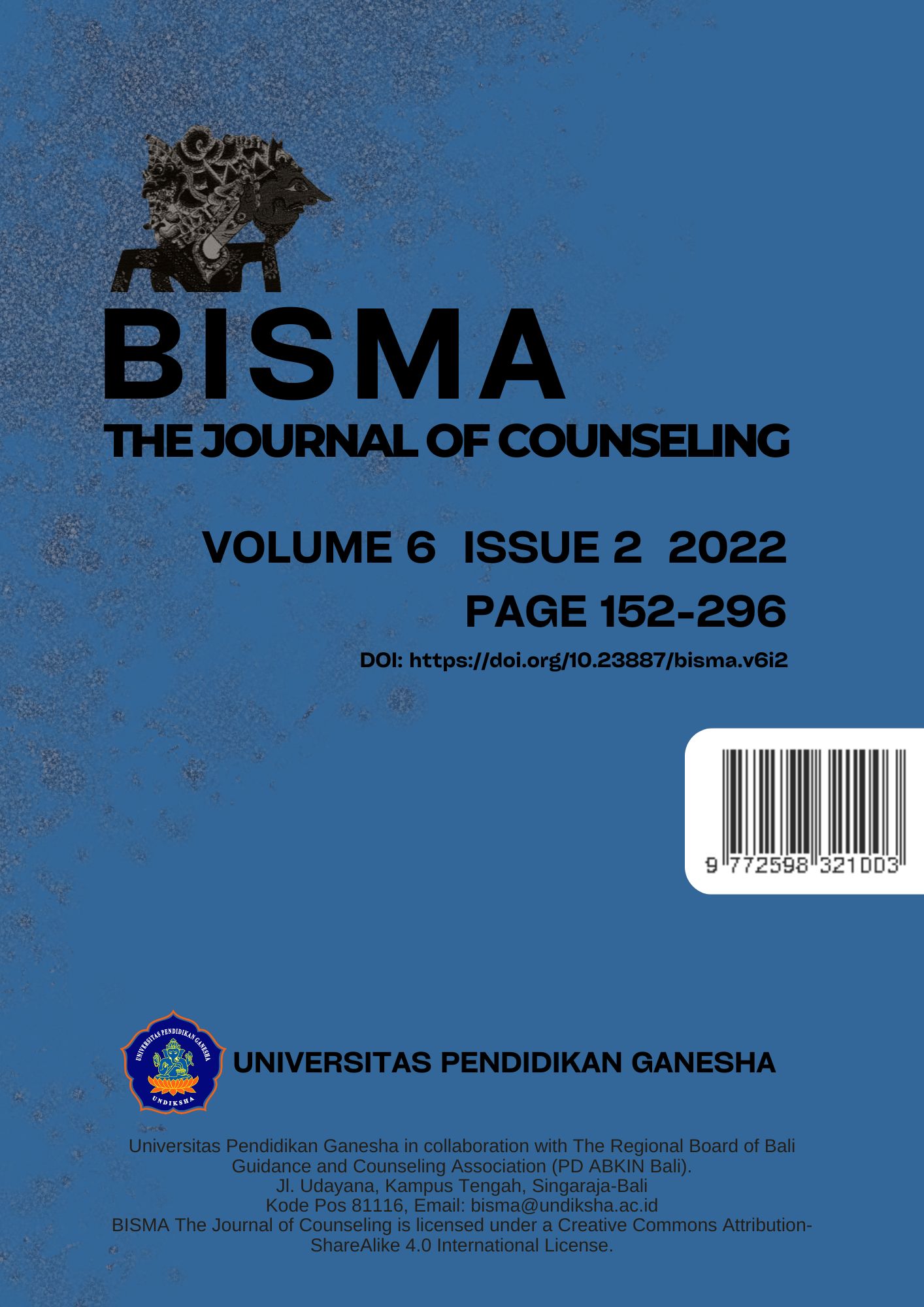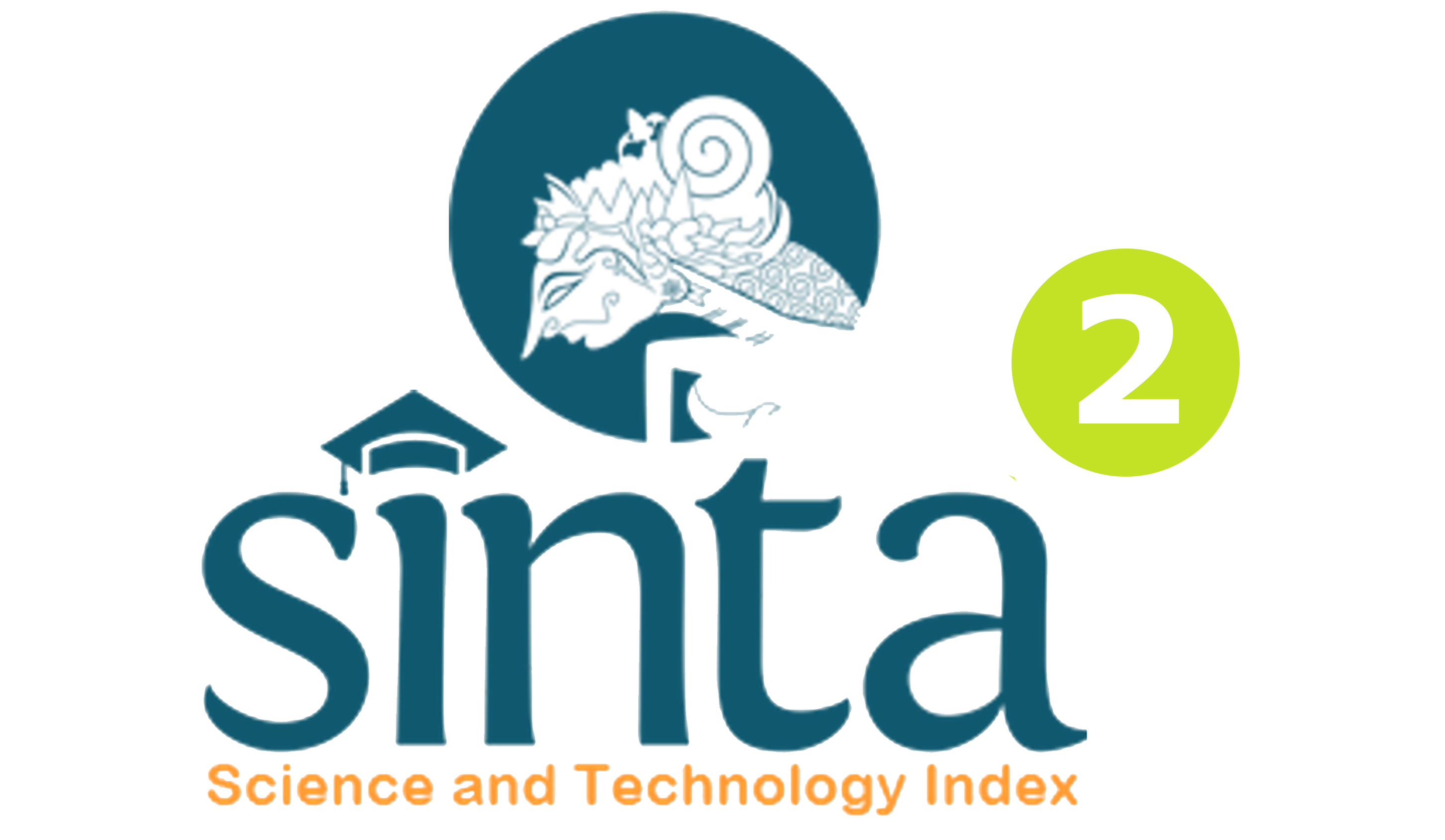Thought Stopping Techniques to Reduce Social Anxiety
DOI:
https://doi.org/10.23887/bisma.v6i2.50135Keywords:
Social Anxiety, Thought Stopping , AdolescentsAbstract
The word anxiety is not a new term to talk about nowadays. The community environment is gradually starting to open up to various kinds of mental issues such as depression and anxiety disorders. One of the problems that many adolescents experience is the problem in their social field, and that is the cause why there are a lot of adolescents indicated to have symptoms of social anxiety. Many factors influence the existence of social anxiety that adolescents have, such as pressure from peers, demands from the environment and people around them, the search for identity, experiences with other people and so on. In this article, the researcher will discuss about how social anxiety exists in one of Vocational High School in Surabaya. And how the thought stopping technique can be used to reduce the social anxiety. Thought stopping technique itself has been widely used to reduce anxiety symptoms in individuals. The application of the thought stopping technique will be done by giving individual counselling interventions to some students who have positive symptoms of social anxiety.
References
American Psychiatric Association. (2013). Diagnostic and Statistical Manual of Mental Disorders Fifth Edition. Washington DC: American Psychiatric Publishing.
Bakker, G. M. (2009). In Defence of Thought Stopping. Clinical Psychologist, Vol. 13, No. 2, 59-68.
Blote, A. W., Kint, M. J., Miers, A. C., & Westenberg, P. M. (2009). The Relation Between Public Speaking Anxiety and Social Anxiety: A Review. Journal of Anxiety Disorders 23, 305-313.
Bulantika, S. Z., Wibowo, M. E., & Jafar, M. (2018). Group Counseling with Systematic Desensitization Techniques and Thought Stopping Techniques to Reduce Social Anxiety. Jurnal Bimbingan dan Konseling 7(2), 106-112.
Cohen, L., Manion, L., & Morrison, K. (2018). Research Methods in Education 8th Edition. New York: Routledge.
Corey, G. (2013). Theory and Practice of Counseling and Psychotherapy, Ninth Edition. Belmont: Brooks/Cole.
Cormier, S. (2016). Counseling Strategies and Intervention for Personal Helpers Global Edition Ninth Edition. Harlow: Pearson.
Creswell, J. W. (2009). Research Design Qualitative, Quantitative, and Mixed Methods Approaches Third Edition. Thousand Oaks: SAGE Publications.
Dawson, C. (2009). Introduction to Research Methods A Practical Guide for Anyone Undertaking A Research Project Fourth Edition. Oxford: How To Books.
Gulo, W. (2002). Metodologi Penelitian. Jakarta: Gramedia Widiasarana Indonesia.
Hardani, Auliya, N. H., Andriani, H., Fardani, R. A., Ustiawaty, J., Utami, E. F., . . . Istiqomah, R. R. (2020). Metode Penelitian Kualitatif & Kuantitatif. Yogyakarta: Pustaka Ilmu.
Harris, T., & Hardin, J. W. (2013). Exact Wilcoxon Signed-Rank and Wilcoxon Mann-Whitney ranksum test. The Stata Journal, 337-343.
Hoffman, T. (2018). The Psychodynamics of Performance Anxiety: Psychoanalytic Psychotherapy in the Treatment of Social Phobia/Social Anxiety Disorder. Journal of Contemporary Psychotherapy, 1-8.
Hofmann, S. G., & Otto, M. W. (2008). Cognitive Behavioral Therapy for Social Anxiety Disorder. New York: Routledge.
Hornby, G., Hall, C., & Hall, E. (2003). Counseling Pupils in Schools Skills and Strategies for Teachers. London: RoutledgeFalmer.
Langer, J. K., Tonge, N. A., Piccirillo, M., Rodebaugh, T. L., & Thompson, R. J. (2018). Symptoms of Social Anxiety Disorder and Major Depressive Disorder: A Network Perpective. Journal of Affective Disorders 243, 1-35.
Leary, M. R. (1990). Responses to Social Exclusion: Social Anxiety, Jealousy, Loneliness, Depression, and Low Self-Esteem. Journal of Social and Clinical Psychology 9 (2), 221-229.
O'Donohue, W., Fisher, J. E., & Hayes, S. C. (2003). Cognitive Behavior Therapy: Applying Empirically Supported Techniques in Your Practice. New Jersey: John Willey & Sons, Inc.
Putri, R. D., Wibowo, M. E., & Japar, M. (2021). Self-Talk and Thought Stopping Group Counseling Effectiveness to Reduce Academic Anxiety in Students with the Broken Home Family. Europian Journal of Psychological Research 8 (1), 95-103.
Rostiana, D., Wibowo, M. E., & Purwanto, E. (2018). The Implementation of Self Instruction and Thought Stopping Group Counseling Techniques to Improve Victim Bullying Self Esteem. Jurnal Bimbingan Konseling7 (1) , 36-40.
Sari, Y. K., Keliat, B. A., & Dayati, R. (2018). The Influence of Thought Stopping Therapy and Family Psychoeducation Toward Anxiety Client Who Undergo Hemodialysis in DR. Achmad Mochtar Hospital. ELEVATE 1 (1), 59-63.
Seligman, L., & Reichenberg, L. W. (2010). Theories of Counseling and Psychotherapy System, Strategy, and Skills Third Edition. Upper Saddle River: Pearson.
Siyoto, S., & Sodik, A. (2015). Dasar Metodologi Penelitian. Yogyakarta: Literasi Media Publishing.
Sommers-Flanagan, J., & Sommers-Flanagan, R. (2004). Counseling and Psychotherapy Theories in Context and Practice Skills, Strategies, and Techniques. Hoboken: John Wiley & Sons, Inc.
Thahir, A., Bulantika, S. Z., & Rimonda, R. (2018). Cinematherapy and Thought Stopping Techniques to Reduce Social Anxiety. ICONCEP, 1-15.
Downloads
Published
Issue
Section
License
Copyright (c) 2022 Angela Cynthia Maharani, Najlatun Naqiyah

This work is licensed under a Creative Commons Attribution-ShareAlike 4.0 International License.









